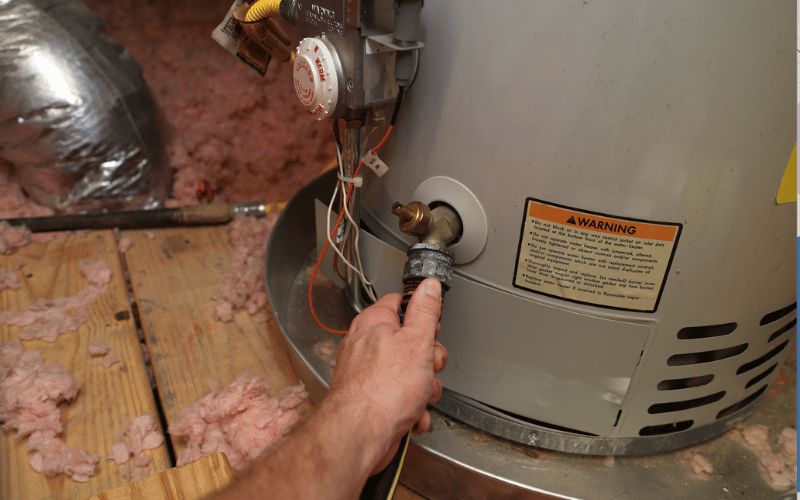Making Sure Durability of Your Home's Hot Water System: Care AdviceWhat to Care for Your Home's Hot Water System Effectively
Making Sure Durability of Your Home's Hot Water System: Care AdviceWhat to Care for Your Home's Hot Water System Effectively
Blog Article
Listed here underneath yow will discover some excellent help and advice pertaining to Tips For Maintaining Your Hot Water Heater.
Warm water is vital for day-to-day convenience, whether it's for a refreshing shower or washing recipes. To ensure your warm water system runs effectively and lasts longer, routine upkeep is essential. This post gives useful tips and insights on just how to keep your home's hot water system to stay clear of disruptions and costly fixings.
Intro
Preserving your home's warm water system might appear challenging, yet with a few basic steps, you can ensure it runs smoothly for several years ahead. This guide covers every little thing from recognizing your warm water system to DIY upkeep pointers and understanding when to contact specialist assistance.
Relevance of Keeping Your Hot Water System
Routine upkeep not only prolongs the life-span of your hot water system however additionally ensures it operates successfully. Neglecting maintenance can bring about decreased effectiveness, greater power bills, and even early failing of the system.
Signs Your Hot Water System Requirements Upkeep
Knowing when your hot water system needs interest can stop significant issues. Watch out for indications such as irregular water temperature, weird noises from the heating unit, or rustic water.
Recognizing Your Warm Water System
Before diving into upkeep tasks, it's valuable to comprehend the standard components of your warm water system. Typically, this includes the water heater itself, pipelines, anode rods, and temperature controls.
Regular Monthly Upkeep Tasks
Normal monthly checks can help capture minor issues prior to they rise.
Purging the Hot Water Heater
Flushing your water heater eliminates debris buildup, enhancing effectiveness and lengthening its life.
Monitoring and Replacing Anode Rods
Anode rods stop deterioration inside the tank. Examining and replacing them when broken is essential.
Checking and Adjusting Temperature Setups
Readjusting the temperature level setups ensures optimum performance and safety.
DIY Tips for Maintenance
You can do a number of upkeep tasks yourself to keep your hot water system in leading problem.
Checking for Leaks
Frequently check pipelines and links for leakages, as these can bring about water damages and greater costs.
Examining Stress Alleviation Valves
Testing the stress safety valve guarantees it functions correctly and avoids extreme pressure buildup.
Shielding Pipelines
Shielding warm water pipelines minimizes warm loss and can conserve power.
When to Call an Expert
While DIY maintenance is valuable, some concerns call for specialist know-how.
Complex Concerns Needing Expert Help
Instances include significant leakages, electrical troubles, or if your hot water heater is consistently underperforming.
Routine Professional Upkeep Advantages
Specialist upkeep can consist of extensive inspections, tune-ups, and making certain compliance with safety requirements.
Conclusion
Normal maintenance of your home's hot water system is essential for performance, long life, and expense savings. By adhering to these ideas and recognizing when to look for professional assistance, you can ensure a trusted supply of hot water without unanticipated interruptions.
Water Heater Maintenance Tips
Test the TPR Valve
Shut off the power and the cold-water supply valve. Place a bucket under the pipe connected to the temperature-pressure-release (TPR) valve on the top or side of the tank. (This valve opens if the tank pressure gets too high.) Lift the valve’s tab to let some water out, then let go. If water keeps flowing, drain the tank partway, unscrew the old valve with a pipe wrench, and install a new one. Check the Anode Rod
Put a hose to the tank’s drain cock and let out a few gallons of water. Now fit a 1 1/16-inch socket onto the rod’s hex head on top of the heater (or under its top plate) and unscrew the rod. If it’s less than ½ inch thick or coated with calcium, buy a new one, wrap its threads with Teflon tape, put it back in the tank, and tighten securely. Use this segmented rod if headroom above the tank is limited. Drain the Tank and Wash Out Sediment
Drain the remaining water in the tank into the bucket, then stir up the sediment on the tank’s bottom by briefly opening the cold-water supply valve. Drain and repeat until clean water comes out of the hose. Close the drain cock, refill the tank, and turn its power back on. Adjust the Temperature
Find the temperature dial on the side of the tank and unscrew its cover. Adjust the dial to 120 degrees using a flathead screwdriver. For every 10 degrees the temperature is lowered, you can expect to save up to 5 percent in energy costs. Turn the water heater off or the thermostat down to its lowest setting if you plan to be away from home for more than three days. Insulate the Pipes
Buy some self-sticking 3/8-inch-thick foam pipe insulation that matches the pipes’ diameter. Slide the foam over the hot-and cold-water pipes as far as you can reach. Insulating the cold-water pipe prevents condensation in summer. Peel the tape and squeeze the insulation closed. If the pipe is 6 inches or less from the flue, cover it with 1-inch-thick unfaced fiberglass pipe wrap. https://www.thisoldhouse.com/plumbing/21016402/how-to-maintain-a-water-heater

Hopefully you liked our section on How to Maintain Your Water Heater & Prolong its Life. Thanks so much for taking the time to browse our blog. For those who enjoyed reading our post plz consider to pass it around. Bless you for being here. Don't hesitate to check up our website back soon.
Visit My Site Report this page